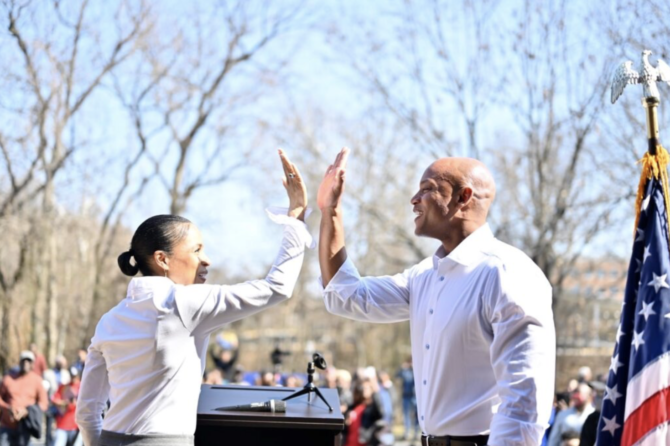WASHINGTON POST: Comptroller’s first-of-its-kind report reveals a lack of affordable housing and child care behind lackluster economic growth.
Maryland’s economic woes predate the pandemic and “serve as flashing yellow lights for the state’s fiscal health,” according to a first-of-its-kind economic analysis released Wednesday by Comptroller Brooke E. Lierman’s office.
The report, written by state economists and policy researchers, delves into the seeming contradiction in Maryland’s economic indicators: The state has the nation’s lowest unemployment rate and highest median income, but it has barely grown since 2016 as the nation’s economy experienced a double-digit expansion.
The analysis found Maryland lost lower- and middle-income workers to places with cheaper housing, and that a larger cohort of women left Maryland’s workforce compared to other states. The population growth sputtered a few years before economic and wage growth stalled in 2017, the study found.
“Private sector job growth has been stagnant. People are moving to Maryland from states with higher costs of living, but more Marylanders are moving away to states where cost of living is even lower,” Lierman wrote in a letter accompanying the report.
The 110-page document doesn’t prescribe policy solutions but focuses attention on the state’s affordable housing problems and lack of access to child care at a time when Maryland leaders are scrutinizing weaknesses in the state economy.Maryland’s state government faces budget gaps that are projected to widen from $761 million next fiscal year to $2.7 billion four years later. The Democrats who dominate the state government are looking for ways to raise hundreds of millions of dollars annually to pay for their priorities, particularly a sweeping education plan and transportation projects.
Gov. Wes Moore (D) began publicly sounding alarms this summer, as Lierman’s report was underway, saying that Maryland’s “economic engine does not support our ambitions.” His own economic council, created in June, is expected to release an analysis within the next few weeks.
Lierman’s analysis used publicly available economic data as well as interviews with residents and business owners to build what she called an audit of the state’s economic performance that also “illustrates the experience of Marylanders as they navigate an evolving economy.”
Among the findings the report highlighted:• From the fourth quarter of 2016 to the first quarter of 2023, Maryland’s gross domestic product grew 1.6 percent. The U.S. GDP grew 13.9 percent during the same time. Neighboring Virginia’s grew at 11.2 percent and Pennsylvania’s at 6.6 percent during the period.• Nationwide there are 1.3 job openings for every job seeker; in Maryland there are 3.1 job openings.• Part of that mismatch is because fewer people ages 25 to 44 are seeking work. Disproportionately, those people are women. “While labor participation of both men and women has fallen in Maryland, the decline among women has been relatively larger compared to the nation, most census regions, and most neighboring states,” the report says.• Survey data gathered by researchers “indicate that household responsibilities such as child care and health issues are contributing factors especially for women opting to leave the traditional labor force,” according to the report.









